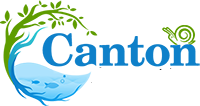
Understanding Aquarium Substrate Basics
The foundation of any successful planted aquarium lies in the substrate used. Substrate refers to the material that lines the bottom of your aquarium and can range from gravel and sand to specialized soil blends. It provides a medium for plant roots to anchor, which is crucial for stability and growth. Furthermore, the substrate can affect water chemistry, filtration, and the overall ecosystem within the tank. Choosing the right type of substrate is a critical first step in ensuring your aquatic plants have the best environment to flourish.
It's important to recognize that not all substrates are created equal. Some cater to the cosmetic appeal of the aquarium, while others are designed with plant nutrition and health in mind. To foster a thriving underwater garden, aquarists must look beyond aesthetics and consider factors such as the substrate's ability to support root growth, its impact on water parameters, and its longevity in the aquatic environment.
Comparing Types of Substrates for Plant Health
When it comes to selecting a substrate for live plants, the choices can be overwhelming. Gravel is a common choice due to its wide availability and variety of colors and sizes. However, it's typically inert, offering little in the way of nutrients. Sand can create a natural-looking environment and is particularly suited for certain plant species and bottom dwellers, but it can compact over time, potentially leading to anaerobic pockets. On the other hand, commercial aquatic plant soils are formulated to provide an ideal balance of nutrients and support robust root systems but may require a more significant initial investment.
In addition to these common options, there are also substrates like laterite, a clay-based material that can be mixed with gravel, and volcanic soils that offer a porous structure for better root penetration and water circulation. Some aquarists opt for layered substrates, with nutrient-rich soils capped by gravel or sand, to combine the benefits of different materials while minimizing nutrient leeching and maintenance issues.
The Role of Nutrients in Substrate Selection
A substrate's nutrient content is a vital component of plant growth in an aquarium. Plants require a range of macro and micronutrients to thrive, and while some of these can be absorbed from the water column, having a nutrient-rich substrate can significantly benefit root-feeding plants. Substrates enriched with essential nutrients like nitrogen, phosphorus, potassium, and trace elements can create a more fertile environment for plants to grow.
Aquarists must also be mindful of how nutrients are released into the aquarium. Some substrates are designed to slowly release nutrients over time, providing a sustained source of food for plants. This slow-release mechanism helps prevent the sudden spike in nutrients that could lead to algae blooms, ensuring a balanced ecosystem. Regular testing of water parameters is recommended to monitor nutrient levels and maintain a healthy balance for both plants and aquatic life.
Substrate Depth and Plant Root Systems
The depth of the substrate layer in an aquarium can greatly influence plant health. A depth of 2 to 3 inches is typically recommended for most plants, as it allows sufficient space for root development without causing anaerobic conditions. Deep-rooted plants may require a thicker substrate layer, while shallow-rooted species could thrive with less.
While a deeper substrate can provide more room for roots to spread, it also requires careful maintenance to prevent the buildup of harmful gases in areas where oxygen is depleted. Stirring the substrate during routine maintenance or using creatures like Malaysian trumpet snails can help aerate deeper substrates and prevent compaction.
Maintaining Your Substrate for Long-Term Plant Health
The longevity and effectiveness of an aquarium substrate are not solely determined by its initial quality. Ongoing maintenance plays a crucial role in preserving substrate quality and, by extension, plant health. Regular cleaning using a gravel vacuum or siphon can remove detritus and prevent the accumulation of organic waste, which could lead to nutrient imbalances and water quality issues.
In addition to physical cleaning, aquarists should consider the natural processes that occur within the substrate. Beneficial bacteria colonize the substrate, contributing to the breakdown of waste and the cycling of nutrients. It's important to preserve these microbial communities during cleaning and when introducing new substrate material. Lastly, replenishing nutrients with root tabs or liquid fertilizers can help sustain plant growth once the initial nutrient load of the substrate has been depleted.


.jpg?width=352&name=Frogbit%20FA%20(1).jpg)

Leave a Comment